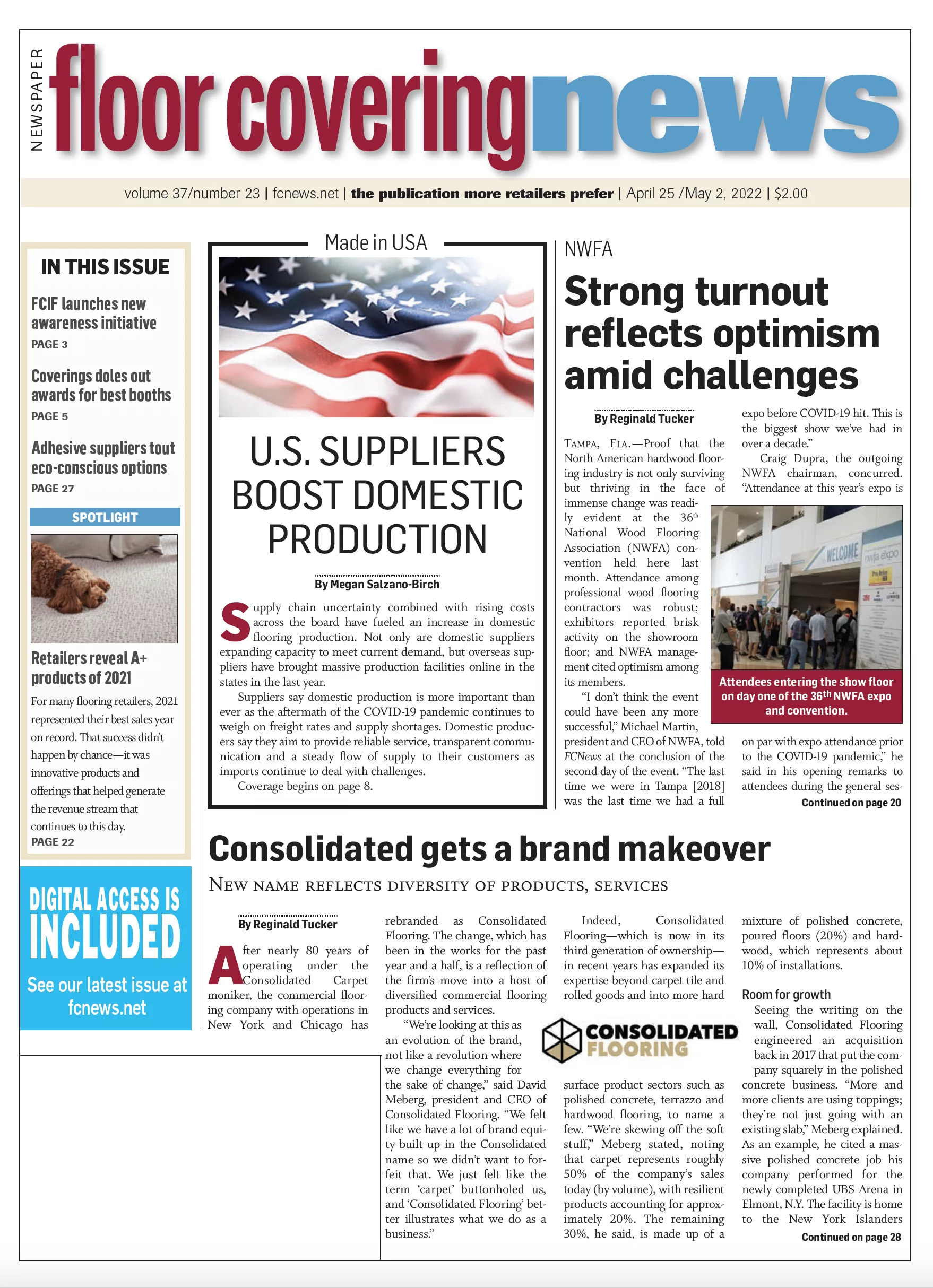 By Jeffrey Johnson—In the wood floor installation industry some things remain constant and some are constantly changing. The one constant in this industry is that we are still dealing with wood and all its unique performance attributes and characteristics. Whether it’s solid or engineered, narrow or wide, short or long, wood is still sensitive to moisture. This includes moisture from the atmosphere, vapor emanating up from a moist concrete slab and moisture being released during the cure process of a water-based, wood flooring adhesive. Wood flooring always needs to be acclimated to the job site and substrate conditions according to manufacturer and industry recommendations. None of these things change simply because we are dealing with a natural product that is heavily influenced by environmental conditions.
By Jeffrey Johnson—In the wood floor installation industry some things remain constant and some are constantly changing. The one constant in this industry is that we are still dealing with wood and all its unique performance attributes and characteristics. Whether it’s solid or engineered, narrow or wide, short or long, wood is still sensitive to moisture. This includes moisture from the atmosphere, vapor emanating up from a moist concrete slab and moisture being released during the cure process of a water-based, wood flooring adhesive. Wood flooring always needs to be acclimated to the job site and substrate conditions according to manufacturer and industry recommendations. None of these things change simply because we are dealing with a natural product that is heavily influenced by environmental conditions.
What has changed is the method by which wood flooring is installed. In the beginning, wood flooring could only be installed by mechanical fasteners over a wood substrate and almost never directly to a concrete substrate. Today, there are a wide variety of methods available to install wood flooring on virtually any type of substrate using trowel-grade adhesives.
Wood flooring adhesives have definitely advanced and improved over the years. Going back some 30-40 years, the wood flooring adhesive of choice was usually solvent based. In this
case, the solvent was a non-flammable material like trichloroethylene or trichloroethane. These adhesives worked well with wood, but the solvent systems were causing havoc on our ozone, so they were banned. Subsequently, the industry was forced to look for other solutions. The next evolution of adhesives came in the form of a moisture-cured urethane adhesive.
Moisture-cured adhesives offered a perfect solution for wood flooring in that they are typically solvent free, contain no water and cure to a very tough and resilient bond. Urethane adhesives are still pretty much the king of wood floor installations but do have some drawbacks. The biggest issue with urethane adhesives is they are very difficult to remove from the surface of prefinished wood flooring if they are allowed to cure on the surface.
The latest adhesive innovation for the wood floor installation market comes in the form of modified silane-type adhesives. These new adhesives work just like a urethane material in that they cure by exposure to moisture, contain no water and no solvents and are 100% solids—although they differ in the curing mechanism. Instead of a reactive isocyanate that urethanes mainly use, modified silane adhesives react using a silane component. There are two major advantages to this change in curing mechanism. First and foremost, modified silane adhesives are much easier to remove from the surface of a prefinished hardwood flooring. The second benefit versus urethane adhesives is the reduction in off gassing during cure. Modified silane adhesives create a very small amount of an alcohol during cure, which does not create bubbles in the adhesive layer thereby creating stronger bonds.
Further advances in the realm of adhesives for wood bonding come in the form of set time control. Traditional adhesives have cure times in the range of four to six hours, but we are
starting to see products being introduced with set times in the range of two to three hours. This is a huge benefit for installers.
Jeff Johnson has more than 30 years of experience in floor covering installation product development and marketing. With practical experience in construction and as an adhesive bench chemist, he has a unique perspective on the materials used in the flooring installation industry.

